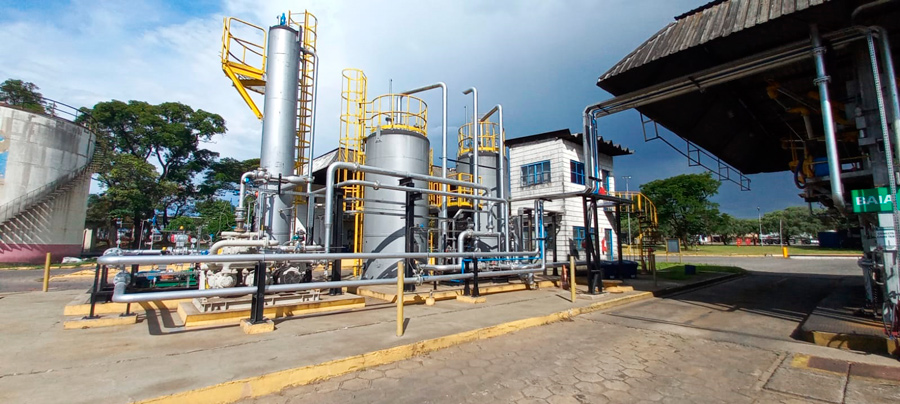FLUXO stands out in sustainability with a solution that reduces pollution and generates value for the customer

Never has there been such an accelerated technological growth as in the last 50 years. Economic growth brings benefits to the countries’ development and improves the quality of life of their populations. However, the negligence in addressing the consequences to the environment may be devastating to planet Earth.
Fast-developing technology is accelerating history and making it difficult for social institutions to handle it efficiently. This also happens with the world unprecedented populational growth, increased economic growth, and more frequent shocks between the expanding economy and the Planet natural systems boundaries1.
Economic theory assumes infinite natural resources with the elasticity of demand curve and unlimited growth. But resources are scarce, and the impacts of a chaotic development have led governments and companies, with greater frequency, to initiatives to promote sustainability and regulatory requirements to control pollution.
In this regard, comes ESG (Environmental, Social and Corporate Governance), consists of a set of practices, indexes and standards to measure the sustainability performance of an organization in these three areas. The ABNT PR 2030 standard, launched in December 2022, is emphasized here, which, in addition to conceptualizing the topic, seeks to define guidelines, an evaluation model and direction for organizations.
For the sustainability actions to be efficient in attracting investors’ capital, they should focus on environment preservation and social impact but also on value generation. And innovation is the key to change the production chain to a sustainable production.
FLUXO has always been aware of the world trends and technological innovations to implement systems for control and reduction of atmospheric emissions. More than twenty years ago, FLUXO brought to Brazil, licensed by Jordan Technologies, the technology of Vapor Recovery Units (VRUs) for Volatile Organic Compounds (VOCs).
VOC emissions contribute significantly to the urban air pollution. When released into the atmosphere, VOCs, combed with nitrogen oxides (NOx) and sunlight, react in a photochemical oxidation with consequent formation of ozone. Unlike the ozone found in the Earth’s stratosphere, which absorbs ultraviolet radiations, the ozone present in the earth’s layer is deemed the major existing atmospheric pollutant because it causes several damages to plants – inhibiting the photosynthesis and reducing plants harvest and growth – and to animals, causing respiratory problems, allergies, and heart diseases.
Several VOC vapors recovery technologies have been developed over in recent years, such as activated carbon adsorption systems with vacuum regeneration; activated carbon adsorption systems with thermal regeneration (TRAC); cooled liquid adsorption (CLAB); chilled condensate; membrane separation ; and others. The biggest challenge, however, was to develop an equipment capable of treating the high vapor flows of a terminal, ensuring recovery efficiency.
The activated carbon adsorption system has become the most widely used technology worldwide, due to its lower operating cost and high recovery efficiency. This system efficiency is of at least 98%, and the carbon beds exhaust is clean air with a concentration of less than 10 mg VOC for each liter of handled fuel. The system can be used in trucks, wagons and ships loading, or in storage tanks filling.
The vapors recovery process involves two stages: separation of hydrocarbons from the VOC vapor stream, and then, the liquefaction of such vapors to return to the storage tank.
In vapor recovery units (VRUs) with activated carbon, the hydrocarbons separation stage is performed through an adsorption process, and liquefaction is performed through adsorption after regeneration using a vacuum pump.
In Brazil, FLUXO has already supplied more than 30 VOC recovery units for loading systems. All of them were approved by the competent environmental agency, which certified a recovery efficiency above 98%, easily complying with the applicable legislation. Being manufactured in Brazil, the project legal requirements (NBRs (Technical Standards) and Inmetro (National Institute of Metrology, Quality and Technology)) are also met, in addition to facilitating parts inventory and maintenance.
Because of Jordan Technologies investments in research and development, we have state-of-the-art vacuum pumps available for VRU application . The vacuum pump is the core of an adsorption/absorption URV. Vacuum pumps manufactured in Japan by HORI exclusively for Jordan, combine regeneration efficiency and product robustness. We use HORI vacuum pumps in Brazil, since 2013.
FLUXO also provides periodic maintenance services in units built by manufacturers that are no longer serving the Brazilian market and was also hired on two occasions to replace undersized and non-operational units with completely new ones. The fact generated a high total cost of the project for the terminals due to a wrong choice of initial supplier.
“Thus, we adopted the implementation of a state-of-the-art technology that allows associating measures to reduce atmospheric emissions and generate value, in addition to being totally adherent to ESG practices, says Fábio André Alves, FLUXO’s Commercial Director.
FLUXO is a company that has excelled in this scenario and is a leader in Brazil in the implementation of atmospheric emission reduction systems
REFERENCES
1 BROWN, LR Eco-Economy: Building an Economy for the Earth 1 ed. Salvador, BA: UMA, 2003. 368 p.
